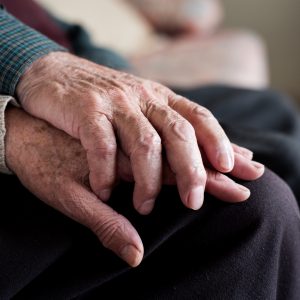Losing Touch: The Challenge of Touch Deprivation During Quarantine

Losing Touch: The Challenge of Touch Deprivation During Quarantine
June 3, 2020
The public health guidance has been clear and ongoing: Avoid shaking hands and touching foreign objects or people; wear gloves when you come into contact with frequently-touched surfaces; don’t touch your face; maintain social distance and avoid close proximity to other people. In essence, touching another person outside of your immediate quarantine household is considered off-limits and even dangerous- now and perhaps for the foreseeable future. But what does this lack of touching mean when humans are essentially hard-wired for social connection? As one expert from Oxford reminds us, “ [Touch is] really fundamental “ for humans, “The sort of more intimate touching – arm round the shoulder, a pat on the arm and these kind of things reserved for closer friendships and family members – are really important.” What are we missing out on when we can no longer reach out and touch someone? And how does this affect older adults, who may be even more “touch deprived” because of their health or circumstances?
We know from human biology that we are social animals who have a need for physical contact. When we become “touch starved” or experience touch deprivation, the result can be long-lasting on our mental, emotional, and physical health. Touching can serve a therapeutic purpose, triggering endorphins to make you feel better while releasing oxytocin which can boost your immune system and lower your heart rate. A gentle touch can be soothing, show compassion, or create a bond of trust between people. There’s even research that shows dying individuals relax if someone is holding their hands. But in an ironic twist, in this moment of high anxiety, we are denied this outlet of emotional compassion. It’s no wonder some have said that “a hug may be just what we need to move on from the traumatic experience of the coronavirus.” And it may be why some have struggled to come up with a “hug curtain” to reach out to their loved ones at a moment when actual skin-to-skin contact is considered dangerous.
For older adults, especially those who are more frail, the lack of touch may be particularly difficult. When senses such as vision or hearing are diminished, the soft feel of another’s hand can still arouse positive emotions and comfort. There is even evidence that touch can reduce feelings of social exclusion and isolation and studies have shown that older adults in nursing homes who experience regular touching will increase their food intake. In fact, as psychologist Doreen Dodgen-Magee warned, “Touch deprivation is experienced by many people much like dehydration is experienced by the marathon runner. If it goes unaddressed, it can take us out.” While she suggests alternatives to satisfy your need for skin-to-skin contact during this time, it’s clear that for many of us, a good-old-fashioned hug is the first thing we’ll clamor for when restrictions are lifted. And just some added advice on that front: Experts suggest that when you hug someone, give it for a good 20 seconds, so that you’re more likely to induce the valuable release of the feel-good hormone oxytocin in the process.







